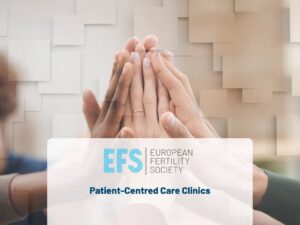With over 100 fertility clinics in the UK, trying to find the best one can be daunting. Understandably, many patients look straight to clinic success rates, however, it can be extremely difficult to compare these rates fairly. This article aims to help you understand IVF success rates and support you to make decisions that are right for you.
Fertility clinic websites can provide a wealth of information but sometimes it can be quite hard to work out how one clinic compares with another, particularly when looking at their success rates. Success rates can vary as they depend on the patients being treated, their age and the reason for their infertility. Some clinics specialise in treating couples with certain types of infertility or older women who are less likely to be successful; this will impact on their success rate. We recommend you make decisions about your treatment on other factors and not just the data. You should consider all the issues that matter personally to you, from opening hours and the time it takes to travel to the clinic from your home, right through to the counselling provision they provide.
Connecting the dots
The Choose a Fertility Clinic tool on the HFEA website can be incredibly helpful as it allows you to look at several fertility clinics and compare the same information across the centres you are considering. We include clinic success rates as we know they are important, but other factors should be considered as well such as:
Location: this can be important because you will need to make multiple trips to a clinic during a treatment cycle. Visiting a centre informally may help you get a sense as to whether that clinic is right for you. You will also get an idea of how long the commute to it will be and whether it’s sustainable for the several weeks you’d be expected to attend.
Support: The decision to have counselling is a very personal one but if it is important to you, you might want to consider whether they have specialist psychological support available, if it’s included in their price plan or if they expect you to pay for it as an extra. The support a clinic can offer extends to how caring and compassionate staff are as well as how efficient their administrative processes are, so factor this in too.
Costs: We know that costs are an important factor when deciding what clinic to have treatment at, particularly as around 60% of treatment is self-funded. If you are paying for your treatment, costs will need to be considered in your decision.
Other considerations
Many clinics offer open evenings, either in-person or virtually to promote the services they offer. The HFEA provides some useful questions that can be used by patients when thinking about what clinic to use which you can access on the HFEA website [https://www.hfea.gov.uk/choose-a-clinic/preparing-for-your-clinic-appointment/]
Additionally, the HFEA’s Choose a Fertility Clinic tool gives you access to a clinic’s most recent inspection report. We give them a star rating between one and five, with a five-star rating indicating that they provide a high-quality service that is compliant with the laws around providing fertility treatment.
By considering all these areas, you will begin to connect the dots and will feel more confident in your decision, knowing it’s based on what’s important to you.
Unpicking the jargon
When we provide a clinic’s success rate, we also share its ‘reliability range’ which shows how confident we are that a clinic will continue to have the same success rates in the future. The greater number of cycles a clinic has performed, the more confident we can be. However, the success rates of small clinics could change dramatically if they had just 10 more successes or failures. We therefore use the reliability range to show you the range of possible success rates a clinic might have in the future.
You are also likely to come across the phrase ‘national average’ when looking at success rates. If a success rate is consistent with the national average, it means it is similar to other centres in terms of pregnancy or live birth rates. However, as we’ve already mentioned, there is much more to whether a centre is a good clinic.
As well as knowing how many pregnancies have been achieved by a specific fertility clinic, understandably, people want to know how many patients have gone on to have a baby.
On the Choose a Fertility Clinic tool you’ll see we refer to two measures – births per embryo transferred and births per egg collection.
Multiple pregnancies are the single greatest health risk of fertility treatment for patients and their babies. We show births per embryo transferred as it promotes safe embryo transfer practices that minimise the chance of having more than one baby – twins for example. However, this measure does not incorporate the outcomes of patients who do not reach embryo transfer stage, so we therefore use the two measures.
Births per egg collection show the chance of success from all the fresh and frozen embryo transfers within two years of one egg collection. Whilst births per embryo gives you an indication of success rates for just one embryo transfer, births per egg collection gives an overall picture of success rates for a full course of treatment which can include one fresh and a number of frozen transfers.
Giving the tools to make informed decisions
Over 60,000 patients navigate their way through fertility services every year and since the HFEA started collecting data in 1991, there have been around 390,000 babies born because of fertility treatment.
It’s important that everyone affected by fertility has access to high-quality information, so they understand what treatment is appropriate for them and realistically, what their chances of success are. The HFEA provides free, clear, and impartial information about fertility treatment, clinics and egg, sperm and embryo donation and we’d urge anyone wanting impartial advice to visit www.hfea.gov.uk. That way, they can be supported to make decisions that are right for them.






